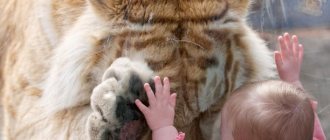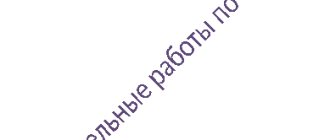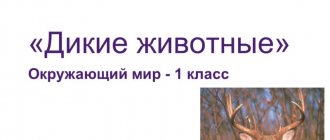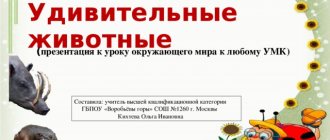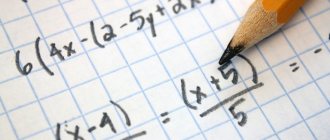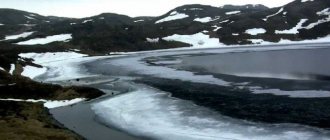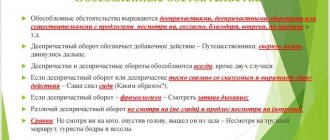Assessment criteria based on the surrounding world.
The main goal of monitoring the world around us is to check knowledge of the facts of educational material, children’s ability to draw simple conclusions, express generalized judgments, give examples from additional sources, and apply complex knowledge.
The system for assessing the achievement of planned results of studying a subject assumes an integrated level approach to assessing learning outcomes. The object of assessment of subject results is the ability of third-graders to solve educational-cognitive and educational-practical problems. The assessment of individual educational achievements is carried out using the “addition method”, in which the achievement of the reference level and its exceeding are recorded.
In accordance with the requirements of the Standard, the components of the complex for assessing achievements are materials from initial diagnostics, intermediate and final standardized works on the subject. The remaining works are selected so that their totality demonstrates increasing success, volume and depth of knowledge, and the achievement of higher levels of educational actions being formed.
The final grade is derived based on the results of the final complex work - a system of tasks of varying levels of difficulty in reading, Russian language, mathematics and the outside world.
In the educational process, assessment of subject results is carried out using diagnostic work (intermediate and final) aimed at determining the level of mastery of the topic by students. Monitoring of the results of the final work on the surrounding world and the final complex work on an interdisciplinary basis is carried out.
Systematic assessment of personal, meta-subject and subject results is implemented within the framework of a cumulative system, which:
• is a modern pedagogical tool for supporting the development and assessment of student achievements, focused on updating and improving the quality of education;
• implements one of the main provisions of the Federal State Educational Standards of General Education of the second generation - the formation of universal educational activities;
• allows you to take into account the age-related characteristics of the development of universal educational actions of primary school students; the best achievements of Russian schools at the stage of primary education; as well as pedagogical resources of educational subjects;
• involves the active involvement of students and their parents in assessment activities based on problem analysis, reflection and optimistic forecasting.
The evaluation criteria are:
• compliance of the achieved subject, meta-subject and personal results of students with the requirements for the results of mastering the educational program of primary general education of the Federal State Educational Standard;
• dynamics of the results of subject-specific learning™, the formation of universal educational actions.
The assessment system used at school is aimed at stimulating the second-grader’s desire for objective control, rather than hiding his ignorance and inability, and at developing the need for adequate and constructive self-esteem.
Current control over the surrounding world is carried out in written and oral form. Written work for current control is carried out at least once a week in the form of tests and practical work. Work for routine control consists of several tasks of the same type, with the help of which a comprehensive test of only one specific skill is carried out.
Thematic control on the surrounding world is carried out orally. For thematic checks, key questions of the program are selected.
The basis for issuing a final assessment of knowledge is the results of the teacher’s observations of the daily work of students, oral questioning, current, test and practical work, and final diagnostic work.
Classification of errors and shortcomings that affect the reduction of the score Errors:
- incorrect definition of a concept, replacement of an essential characteristic of a concept with an unimportant one;
— violation of consistency in the description of an object (phenomenon) in cases where it is significant;
- incorrect disclosure (in a story-reasoning) of the causes, patterns, conditions for the occurrence of one or another studied phenomenon;
— errors in comparing objects, their classification into groups according to essential characteristics;
— ignorance of factual material, inability to give independent examples confirming the expressed judgment;
- lack of ability to make drawings, diagrams; incorrect filling of the table; inability to support your answer with a diagram, drawing, or illustrative material;
— errors in setting up the experiment, leading to an incorrect result;
- inability to navigate on a map and plan, difficulties in correctly displaying studied objects (natural history and historical).
Disadvantages:
—
the predominance of its non-essential features when describing an object;
— inaccuracies in the execution of drawings, diagrams, tables that do not negatively affect the result of the work; lack of markings and signatures;
— individual violations of the sequence of operations during the experiment that do not lead to an incorrect result;
- inaccuracies in determining the purpose of the device, its use is carried out” after leading questions;
— inaccuracies when locating an object on the map.
The world around us: control and assessment of knowledge
Relevance of the issue
The subject “The world around us” helps the child to socialize, adapt to life situations, and get used to society. Let us name the main problems of control and evaluation in this area:
- There are many tasks that are not directly related to the content of the planned results. These tasks are time-consuming and often impractical.
- There are few tasks that test children’s practical skills: “what would you do if…”, “what learning method would you use if…”.
- There are almost no tasks that test the level of intellectual activity of students: logical thinking, imagination, ability to compare, generalize, classify, choose a classification sign. There are no tasks to formulate a hypothesis and select evidence, and few tasks to find errors.
- There are many tasks to test memory, repeat texts (“learning a textbook by heart”).
However, schoolchildren love the subject “The World around us”. In these lessons, the role of the student changes. From a listener and spectator who must read, remember, retell, the child turns into a researcher - analyzing, comparing, drawing various conclusions. It is a pity that outdated methods of control reduce the effectiveness of studying the subject.
Transition to a modern assessment system
There are two types of knowledge control: one-way (traditional) and reverse (modern). Focusing on the second type, the teacher should set himself a number of tasks:
- Analysis of achievements to adjust the educational process (“How should learning be changed in order to ...”).
- Analysis of the influence of the learning process on the student’s personality.
- Formation of self-control and self-esteem in schoolchildren.
If a teacher does not analyze his activities, control and evaluation are practically meaningless. Let's take a closer look at how to carry out control and assessment work in the lessons of the surrounding world, taking into account the modern concept of education.
The world. 2nd grade. Tests and independent work for ongoing monitoring
The manual is intended for organizing ongoing monitoring of topics when working on the textbook by G.G. Ivchenkova, I.V. Potapov “The world around us. 2nd grade." It complements the set for the course “The World around us” for grade 2, which includes a textbook (in two parts), workbooks, a teaching aid, test and diagnostic work in sections and a final test work. The proposed materials allow you to check the subject and meta-subject learning outcomes of second-graders in the course “the world around us.”
Buy
General requirements
- Compare the student’s results only with his own achievements.
You cannot compare the results of children because you need to take a positive approach to teaching. If a student is not making progress, it makes sense not to focus on this. If there are successes, praise them publicly. - Criticize not the child, but his decision.
Students have their own characteristics, and there is nothing to worry about. You can only evaluate the result of a specific activity, the completion of a specific task. - End each exercise with a meaningful disclosure of the assessment.
The process of discussing errors must be loyal and correct. It is better not to correct the mistake, but to highlight the place where it was made, and then collectively discuss problem areas. Having corrected a mistake on his own, the child most likely will not repeat it. - Determine the cause of the error together with the student.
- Give marks only for the result.
It is unacceptable to evaluate the work process; grades for diligence are no longer given. For example, in mathematics you cannot lower a mark for a grammatical error. - Provide the opportunity to correct work
.
Directly in the lessons of the surrounding world, teachers often give marks for activity and initiative. But attitude is not the result of activity, so it is better not to multiply marks, and in many situations limit yourself to verbal assessment.
The world. 4th grade. 200 tasks on the surrounding world for thematic control. Our region
The manual is intended for organizing thematic control when working on the textbook by G.G. Ivchenkova, I.V. Potapov “The world around us. 4th grade". It complements the set on the surrounding world for grade 4, which includes a textbook (in 2 parts), workbooks, teaching aids, tests and diagnostic works, tests and independent work for ongoing monitoring, and comprehensive training works. The proposed materials allow for a diverse assessment of subject learning outcomes on the topic “Our Land”.
Buy
What else needs to be monitored, but not assessed:
- Motive of activity.
Does the child understand what he will do and what result he should get? - Acceptance of the learning task.
Does the student answer the questions “I can - I can’t”, “I know - I don’t know”, “enough knowledge - not enough knowledge”. - Activity control.
Does the student remember the initial task at different stages of work, does he know what he will do next.
This type of activity as educational dialogue deserves special attention. It can rarely be observed in the classroom, but active communication between children when exploring the world around them is very useful.
